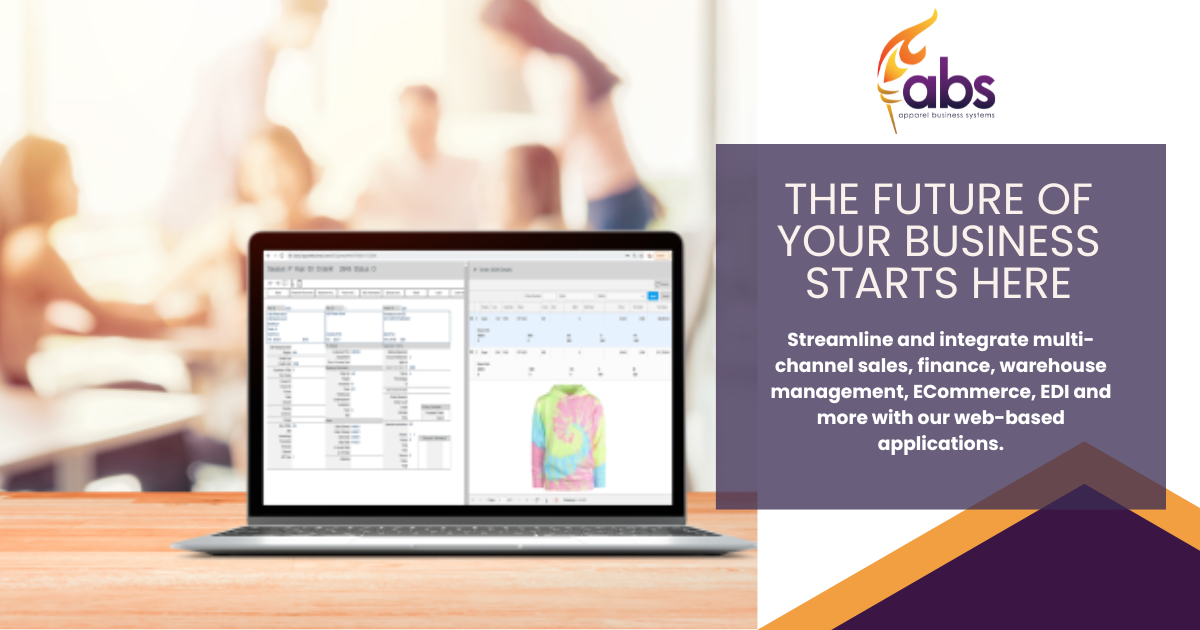11 Reasons Companies Benefit from Apparel ERP with WMS
In today's fast-paced and ever-evolving apparel industry, businesses are constantly seeking ways to streamline their operations, enhance customer experiences, and boost overall profitability. One powerful solution that has gained significant traction is the integration of Apparel ERP (Enterprise Resource Planning) software with Warehouse Management software. This comprehensive approach offers numerous benefits that contribute to efficient operations and improved bottom lines. In this article, we will delve into the myriad advantages of integrating these two solutions.
Apparel ERP Software with Built-In WMS Enhances Operations
A Warehouse Management System (WMS) tailored for apparel businesses is a comprehensive software solution designed to optimize the intricate processes within a clothing and fashion-focused
warehouse environment. This specialized apparel warehouse software empowers apparel companies to efficiently manage their inventory, streamline order fulfillment, and enhance overall operational efficiency. By providing real-time visibility into inventory levels, accurate demand forecasting, and automated order processing, the WMS ensures that apparel items are precisely tracked from arrival to shipment. It minimizes errors through automated workflows, allowing for faster and error-free order picking, packing, and shipping. Additionally, the software assists in
maximizing warehouse space utilization, guiding efficient placement of products based on their attributes, and facilitating compliance with industry regulations through traceability features. This dedicated WMS empowers apparel businesses to meet the demands of the industry while delivering improved customer experiences through timely and accurate order deliveries.
In essence, a WMS designed specifically for apparel businesses revolutionizes warehouse operations by integrating advanced technologies and automation. It transforms traditional manual processes into streamlined, data-driven workflows that optimize supply chain management, inventory management, order processing, and space utilization. By harnessing the power of real-time insights, accurate demand forecasting, and efficient order fulfillment, this tailored WMS ensures that apparel companies can navigate the challenges of the industry with precision and agility, ultimately enhancing customer satisfaction and driving business growth.
Key Benefits of Integrated Apparel WMS
1. Seamless Data Flow and Real-time Insights:
One of the most significant advantages of integrating Apparel ERP and Warehouse Management software is the seamless flow of data between the two systems. Real-time synchronization ensures that inventory levels, order statuses, and customer information are always up-to-date. This empowers decision-makers with accurate insights to make informed choices regarding inventory restocking, production planning, and order fulfillment.
2. Enhanced Inventory Management:
Effective apparel inventory management software lies at the heart of a successful apparel business. Integration between ERP and Warehouse Management software provides a consolidated view of inventory levels, helping businesses avoid stockouts and overstocking. This reduces carrying costs, improves turnover rates, and optimizes working capital.
3. Efficient Order Fulfillment:
Integrated software allows for streamlined order processing and fulfillment. When a customer places an order, the system can automatically check product availability in real-time. If the item is in stock, the Warehouse Management software can initiate the picking, packing, and shipping process seamlessly. This results in faster order fulfillment and higher customer satisfaction.
4. Accurate Demand Forecasting:
Apparel businesses often face seasonal demand fluctuations and trends that can be challenging to predict accurately. Integrated ERP and Warehouse Management software enable better demand forecasting by analyzing historical sales data, current inventory levels, and market trends. This forecasting accuracy helps in planning production and procurement strategies effectively.
5. Reduced Manual Errors:
Manual data entry and communication between disparate systems can lead to errors, such as incorrect order details, inventory discrepancies, and shipping mistakes. Integration eliminates the need for manual data transfer, minimizing the risk of human errors and ensuring data consistency across the board.
6. Cost Savings:
Implementing and maintaining separate ERP and Warehouse Management systems can be costly in terms of licensing, infrastructure, and training. Integrated software solutions often offer a more cost-effective approach by combining functionalities and reducing the need for redundant systems and processes.
7. Improved Collaboration:
Collaboration between different departments, such as sales, production, and warehousing, is essential for efficient operations. Integrated software promotes better communication and collaboration, as teams can access real-time information and work together towards common goals.
8. Streamlined Returns Management:
Returns are an inevitable part of apparel retail. Integrated software enables efficient returns management by automating the process, from initiating a return to restocking returned items. This reduces the time and resources spent on handling returns and improves overall operational efficiency.
9. Scalability and Growth:
As apparel manufacturers and distributors grow their brand, managing increased complexity becomes a challenge. Integrated solutions are designed to scale alongside the business, accommodating higher order volumes, expanded product lines, and additional warehouses or distribution centers.
10. Regulatory Compliance:
The apparel industry is subject to various regulations and standards, such as labeling requirements and safety standards. An integrated system ensures that product information, labeling, and documentation are accurate and compliant with industry regulations.
11. Data-driven Insights:
Integrated apparel software solutions generate comprehensive reports and analytics by analyzing data from both ERP and Warehouse Management systems. These insights provide a holistic view of the apparel and fashion industry performance, enabling data-driven decision-making and strategic planning.
ABS has the ERP with WMS Solutions to Elevate Your Operation
The benefits of implementing the ABS Apparel ERP solution and Warehouse Management software are undeniable. From seamless data flow and enhanced inventory management to improved customer experiences and cost savings, the inventory management system advantages span across various aspects of an apparel business. By adopting an integrated approach, apparel brands can position themselves for success in a competitive market, driving efficiency, profitability, and growth.
Whether simple pack/pack functionality, or more robust enterprise warehouse solutions with location and barcode scanning features, ABS has you covered. Also included is full carrier integration as well as EDI and E-Commerce interfaces.
Want to learn more? We'd love to learn more about your path to success! Let's schedule a brief introductory chat. info@apparelbusiness.com












